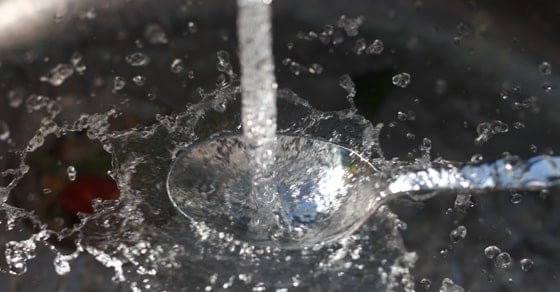Water quality and the ability to maximize reuse applications continues to become a concern at the forefront of sustainability amidst a growing population.
While biochar has been gaining traction in the soil amendment industry for its restorative capabilities and potential in carbon sequestration, studies are finding that biochar could be a much-needed tool in water treatment as well, particularly in the removal of pharmaceuticals.
The Problem with Pharmaceuticals in Water
The potential for pharmaceuticals and other organic contaminants to end up in water sources has been gaining increased attention as of late. Despite the major advancements that have been made in wastewater treatment, pharmaceuticals still remain an industry challenge, with most treatment methods not addressing them (though some methods do indirectly remove pharmaceuticals). In fact, pharmaceuticals are now recognized by the EPA as a contaminant of emerging concern (CEC).
Pharmaceuticals can end up in water through a variety of paths; leaching into groundwater from animal excrement at agricultural operations, human sewage, and improper disposal account for some of the primary avenues. Pharmaceuticals that make it through wastewater treatment processes are discharged as part of the effluent into surface water sources. This allows the pharmaceuticals to pass on to aquatic life, as well as humans when that water source is used for drinking.
In a study the first of its kind, the Toxic Substances Hydrology Program of the U.S. Geological Survey looked at vulnerable water sources to determine if chemicals were making it into streams. The study analyzed 139 streams considered as vulnerable for a smattering of chemicals, among which were various types of pharmaceuticals, detergents, disinfectants, and more.
The study looked for 95 wastewater-related organic chemicals and found the following:
- At least one of the 95 chemicals could be found in 80% of the streams.
- 82 of the 95 chemicals were found at least once, with a mixture of chemicals being common.
- Three quarters of the sampled streams had more than one chemical.
- Half had 7 or more.
- 34% had 10 or more.
- The chemicals were found in very low concentrations.
- The most commonly detected chemical groups were steroids, non-prescription drugs, and insect repellent.
Various studies have confirmed that pharmaceuticals in water sources can have devastating effects on aquatic wildlife, with the potential to severely disrupt ecosystems. While information is lacking when it comes to the effect long-term exposure can have on humans, with a matrix of factors making it difficult to estimate, the demonstrated effect on aquatic wildlife has some people concerned.
And while there are efforts underway that take a preventative approach to keeping drugs out of water (ex., drug take-back programs) a solution is still needed to address the low concentrations that are found in water, and as some recent studies show, biochar might just be able to help.
What is Biochar?
Biochar is created through thermally processing biomass such as plant materials or wood waste in a low-oxygen environment – a process known as pyrolysis that is typically carried out in a rotary kiln. The pyrolysis of biomass creates a charcoal-like material with a porous structure that allows biochar to capture and hold on to minute particles.
One study, Pharmaceutical Removal in Synthetic Human Urine Using Biochar, utilized synthetic urine to test biochar’s effectiveness at removing seven pharmaceuticals in an effort to demonstrate the opportunity that source separated, treated urine holds as a potential nutrient source.
Although some technologies for removal of pharmaceuticals do exist, they can be costly. Biochar is considered a precursor to activated carbon – a more advanced adsorbent that can be used to remove pharmaceuticals and is widely used throughout the water treatment industry already for other objectives. However, the aforementioned study cites cost as a motivating factor in using biochar over activated carbon, with biochar being significantly cheaper per ton.
While limited research around biochar as an adsorbent in water and wastewater treatment is available, interest around the topic is growing. The authors cite some studies that have proven that high temperature biochars can perform comparably to activated carbon products (though it’s important to note that biochars exhibit differing characteristics depending on their source material and the process parameters used to produce the char). The study found that at high doses, biochar was able to remove 90% of the targeted pharmaceuticals, while leaving more than 80% of the nitrogen and phosphorus content.
Another study, The Potential Role of Biochar in the Removal of Organic and Microbial Contaminants from Potable and Reuse Water: A Review, looked at the feasibility of using biochar as a replacement for activated carbon in removing organic contaminants such as pharmaceuticals. The review found biochar to be a promising and cost-effective option.¹
Biochar is currently being used in water treatment on a small scale in Southeast Asia, where Aqueous Solutions is focused on improving water quality for rural, economically marginalized, and indigenous populations.
Among other efforts and initiatives, the company works with communities to produce biochar in makeshift ovens. The biochar is then used in filtering systems to remove toxic components.
Conclusion
While more research on the topic is needed, existing studies show that the potential to use biochar as an adsorbent in removing pharmaceuticals and other organic contaminants from water and wastewater sources could be a promising and cost effective solution to keeping such materials out of waterways and drinking water sources. An accessible, cost-effective solution in meeting water quality demands and reuse applications is a necessity to a sustainable future.
FEECO offers engineered systems for the production of biochar and activated carbon, as well as dryers and complete dryer islands for biomass. For more information on our biochar processing capabilities, contact us today!
SOURCES:
- Inyang, Mandu, and Eric Dickenson. “The potential role of biochar in the removal of organic and microbial contaminants from potable and reuse water: A review.” Chemosphere 134 (2015): 232-40. Science Direct. Web. Apr. 2017.



